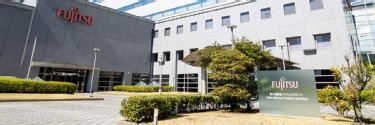TechTarget News
News from TechTarget's global network of independent journalists. Stay current with the latest news stories. Browse thousands of articles covering hundreds of focused tech and business topics available on TechTarget's platform.Latest News
-
29 Dec 2025
Agentic orchestration, the next AI issue for CIOs to tackle
By Don FluckingerSalesforce, ServiceNow, AWS and others would like to manage all of your AI agents.
-
19 Dec 2025
News brief: Browser security flaws pose growing risk
By Staff reportCheck out the latest security news from the Informa TechTarget team.
-
18 Dec 2025
Agentic AI security focus of ServiceNow acquisition targets
By Don FluckingerServiceNow attempts to build one (secure) platform to rule them all.
- Latest news from around the world
All News from the past 365 days
-
06 Jan 2026

Lenovo taps AI and digital twins to power World Cup 2026
By Aaron TanThe technology partner for upcoming football tournament has built an AI knowledge assistant for coaches, digital avatars to assist VAR decisions, and smart infrastructure for venue management
-
06 Jan 2026

Benchmark prices under NSA far below actual median rates: Study
By Jacqueline LaPointeQualifying payment amounts used under the No Surprises Act are, on average, a third of the payers' contracted in-network rates, according to a study.
-
-
06 Jan 2026

Privacy will be under unprecedented attack in 2026
By Bill GoodwinThe UK and Europe are ramping up opposition to encryption and stepping up surveillance of private communications. Here is what to expect this year
-
06 Jan 2026

Public unclear what CDC-backed shared decision-making is
By Sara HeathMany patients misunderstand shared decision-making, a red flag as the CDC now recommends the practice before getting six previously endorsed childhood vaccines.
-
06 Jan 2026

Fujitsu UK job cuts as staff pay the price for failures of top executives
By Karl FlindersTroubled IT giant’s staff are paying the price for senior management failures over Post Office scandal
-
06 Jan 2026

Integrity360 starts the year with an acquisition
By Simon QuickeIt’s a headline that might sound familiar as the security player follows the same path it followed last year
-
06 Jan 2026

Communicate and CDW adding executive talent
By Simon QuickeChannel players seal hires to bolster their respective management teams at the start of a busy year for both firms
-
06 Jan 2026

UAE launches AI ecosystem to boost climate-resilient agriculture worldwide
By Andrea BenitoIn partnership with the Gates Foundation, Abu Dhabi unveils a multi-institution AI platform designed to accelerate agricultural innovation, strengthen food security and support millions of smallholder farmers facing climate volatility
-
06 Jan 2026

The networks that will turn potential into profit in 2026
By Joe O’HalloranWhat’s ahead in networking over the course of the next 12 months? It will be less a case of a rush to tech, but rather a move from what is possible to what business benefits can be unlocked
-
-
06 Jan 2026

The networks that will turn potential into profit in 2026
By Joe O’HalloranWhat’s ahead in networking over the course of the next 12 months? It will be less a case of a rush to tech, but rather a move from what is possible to what business benefits can be unlocked
-
06 Jan 2026

Fujitsu Post Office IT support team were ‘legalised hackers’
By Karl FlindersBackdoors meant it was possible for Fujitsu staff to steal money from Post Office branches, says former Fujitsu tech worker
-
06 Jan 2026

S/4Hana in 2026: Three ways to move off SAP ECC
By Cliff SaranWe speak to three companies that have taken very different approaches to migrate off SAP Enterprise Core Components onto S/4Hana
-
06 Jan 2026

Fujitsu boss has been a Post Office scandal bystander for over a decade
By Karl FlindersIT supplier’s European boss was kept up to date with challenges to the Horizon system, but like others, remained silent
-
06 Jan 2026

Nvidia unveils Vera Rubin architecture to power AI agents
By Aaron TanThe AI chip giant has taken the wraps off its latest compute platform designed for test-time scaling and reasoning models, alongside a slew of open source models for robotics and autonomous driving
-
05 Jan 2026

UK government to spend £210m on public sector cyber resilience
By Alex ScroxtonThe UK government unveils a £120m Cyber Action Plan to help reinforce and promote IT security resilience across the country's public services
-
05 Jan 2026

Hospitals aren't ringing in a new 340B rebate program
By Jacqueline LaPointeHospitals are applauding a federal court's ruling to halt the Jan. 1 implementation of a rebate model pilot in the 340B Drug Pricing Program, which they claim would cost north of $400M.
-
05 Jan 2026

Novo's Wegovy pill hits the market with a $149 cash-pay price
By Alivia Kaylor, MScNovo Nordisk has launched oral Wegovy in the U.S., with cash-pay pricing starting at $149 per month for the lowest doses and ranging up to $299 for higher doses.
-
05 Jan 2026

Telehealth prescribing flexibility extended through 2026
By Anuja VaidyaThe flexibility has been extended for the fourth time through 2026, allowing prescriptions of controlled substances via telehealth without a prior in-person exam.
-
05 Jan 2026

How Bahrain is building a region-leading digital economy
By Andrea BenitoFrom hyperscale cloud and fintech regulation to AI skills and smart manufacturing, Bahrain is positioning technology at the heart of its economic diversification strategy, says Bahrain EDB’s Musab Abdullah
-
05 Jan 2026

What will the Post Office scandal bring in 2026?
By Karl FlindersCampaigners are waiting to see what will unfold in the Post Office scandal in 2026, but history has told them not to hold their breath
-
05 Jan 2026

Fresh SCC UK boss starts next week
By Simon QuickeAppointment announced towards the end of last year, with Russell Brown stepping into the role from next Monday
-
05 Jan 2026

Falcon and beyond: Abu Dhabi’s blueprint for national AI governance
By Andrea BenitoThrough national frameworks, open-source innovation and homegrown models such as Falcon, Abu Dhabi is shaping a distinctive approach to AI governance and deployment
-
05 Jan 2026

Global cloud infrastructure spending hits $102.6bn in Q3 2025
By Aaron TanThe cloud infrastructure market grew 25% year on year, driven by enterprises moving from AI experimentation to scaled deployment, according to research from Omdia
-
05 Jan 2026

Singtel trials 50Gbps fibre to support future AI and cloud workloads
By Aaron TanSingtel kicks off technical pilot for ultra-high-speed broadband, targeting the bandwidth requirements of immersive media, remote enterprise workflows and AI-driven systems
-
02 Jan 2026

ServiceNow predicts more than one million new AI-driven jobs in UAE by 2030
By Andrea BenitoEnterprise AI adoption, national strategy and large-scale digital transformation programmes are set to reshape the UAE labour market and technology landscape, according to ServiceNow research
-
02 Jan 2026

Acer: Channel can help drive greater AI PC adoption
By Simon QuickeWhile large numbers of PC devices have been sold, partners are key to helping users benefit from artificial intelligence
-
31 Dec 2025

Top 10 police technology stories of 2025
By Sebastian Klovig SkeltonHere are Computer Weekly’s top 10 police technology stories of 2025
-
31 Dec 2025

2025 review: Channel stories of the year
By Simon QuickeA look back over the stories that generated headlines over the past 12 months
-
31 Dec 2025

Top 10 surveillance, journalism and encryption stories of 2025
By Bill GoodwinA transatlantic row between the UK and the Trump administration erupted after the UK attempted to force Apple to break its advanced encryption. That was just one of a series of stories reporting on the tension between state surveillance and privacy this year
-
31 Dec 2025

Top 10 women in tech and diversity in tech stories of 2025
By Clare McDonaldAs the year draws to a close, Computer Weekly looks over some of the notable stories relating to women in tech, diversity and inclusion over the past 12 months
-
31 Dec 2025

Top 10 business applications stories of 2025
By Brian McKennaThere is no doubt what took centre stage in the theatre of business applications in 25: agentic AI, surpassing pre-2022 AI, and generative AI. C-level executives bang the AI drum while enterprises find value
-
30 Dec 2025

Oldest victim of Post Office scandal awarded OBE in New Year Honours 2026
By Brian McKennaThe New Year Honours List 2026 conferred an OBE on the oldest living victim of the Post Office scandal, as well as hailing members of the UK technology community
-
30 Dec 2025

PwC: AI, cloud and next-generation networks redefine the Middle East’s TMT future
By Andrea BenitoFrom sovereign cloud and AI compute to gaming and quantum, PwC research shows how the region is reshaping growth, competitiveness and digital sovereignty
-
30 Dec 2025

Top 10 IT careers and skills stories of 2025
By Clare McDonaldLooking back at the skills and hiring landscape in 2025, Computer Weekly shares key moments for IT careers and skills over the past 12 months
-
30 Dec 2025

Top 10 information management stories of 2025
By Brian McKennaArtificial intelligence continued to have a big impact on information management in 2025. Also selected are case studies and interviews with data chiefs that show the enduring value of good data management
-
30 Dec 2025

Top 10 government IT stories of 2025
By Lis EvenstadThe past 12 months has seen a number of significant milestones in digital government. Here are Computer Weekly’s top 10 government IT stories of 2025
-
30 Dec 2025

Top 10 technology ethics stories of 2025
By Sebastian Klovig SkeltonHere are Computer Weekly’s top 10 tech ethics stories of 2025
-
30 Dec 2025

Top 10 European IT stories of 2025
By Karl FlindersHere are Computer Weekly’s top 10 European technology stories of 2025
-
29 Dec 2025

Top 10 Post Office scandal stories of 2025
By Karl FlindersHere are Computer Weekly’s top 10 Post Office scandal stories of 2025
-
29 Dec 2025

Top 10 cyber security stories of 2025
By Alex ScroxtonAI dominated all tech conversations this year, but the concerns of cyber security professionals extend far beyond. From remote work to supply chains, quantum to identity, there were plenty of other topics for the industry to chew over in 2025.
-
29 Dec 2025

Top 10 NHS IT stories of 2025
By Lis EvenstadA new digital strategy, funding boosts and struggles to keep the lights on: here are Computer Weekly’s top NHS IT stories in 2025
-
28 Dec 2025

Middle East tech trends 2026: AI, cyber security and sovereign infrastructure take centre stage
By Andrea BenitoAs artificial intelligence moves from experimentation to production and cyber threats escalate, the Middle East is entering a decisive phase of digital transformation, says Omdia chief analyst Trevor Clarke
-
24 Dec 2025

Top 10 India stories of 2025
By Aaron TanFrom infrastructure expansion and sovereign AI innovation to regulatory maturity, Computer Weekly recaps the key developments that kept CIOs and technology suppliers across India busy in 2025
-
24 Dec 2025

Top 10 networking stories of 2025
As enterprises become more extended, dealing with network complexity has become almost as important as network performance. The key to this is AI – but only if properly deployed. Discover more in Computer Weekly’s top 10 networking stories of 2025
-
24 Dec 2025

Top 10 cyber crime stories of 2025
By Alex ScroxtonIn many regards, 2025 proved to be a relatively normal year for the cyber security world as threat actors and security pros continued their long-running cat-and-mouse game, but it was also a stand-out year that saw some of the largest cyber attacks ever to befall the UK. Discover more in Computer Weekly’s top 10 cyber crime stories of 2025
-
24 Dec 2025

Top 10 AI stories of 2025
By Cliff SaranNo topic took over 2025 like that of artificial intelligence – whether it was DeepSeek, the discussion around computational resources, low return on investment, or the hype surrounding agentic AI. Here are Computer Weekly’s top 10 AI stories of 2025
-
23 Dec 2025

UK government further expands rural 4G coverage through SRN
By Joe O’HalloranOver 100 mobile masts have been upgraded across rural Wales, Scotland and England, delivering 4G coverage from all mobile network operators for the first time as part of an ongoing development scheme
-
23 Dec 2025

Aftermarket car telematics arena drives past 90 million subscriptions
By Joe O’HalloranStudy of aftermarket car telematics finds growing value in technology for application areas including stolen vehicle tracking and recovery, vehicle diagnostics, Wi-Fi hotspots, convenience applications and usage-based insurance
-
23 Dec 2025

HHS seeks info to guide AI regulation, reimbursement
By Anuja VaidyaHHS is seeking feedback from stakeholders on regulations, reimbursement models and research initiatives that will accelerate AI adoption and use in healthcare.
-
23 Dec 2025

The FDA approves the first GLP-1 weight loss pill
By Alivia Kaylor, MScThe FDA has approved the oral version of Novo Nordisk's popular injectable obesity drug Wegovy, making it the first GLP-1 pill cleared for weight loss.
-
23 Dec 2025

Trump administration ups payer price transparency requirements
By Jacqueline LaPointeThe federal government proposed major updates to the Transparency in Coverage rule, including data disclosure changes for in-network rates and more robust consumer-friendly disclosure.
-
23 Dec 2025

Sama X to commence operations in Jordan with Starlink services
By Joe O’HalloranRegional tech venture aims to bridge connectivity gaps in industry, education, enterprise, government and humanitarian sectors in the Middle East and North Africa with regional roll-out
-
23 Dec 2025

UAE and Dubai’s tech ambitions in focus as Sheikh Hamdan meets Elon Musk
By Andrea BenitoHigh-level talks highlight AI, space, digital infrastructure and the UAE’s push to become a global technology and innovation hub through partnerships and progressive regulation
-
23 Dec 2025

Top 10 telecoms stories of 2025
By Joe O’HalloranThe telecoms market has delivered a wave of innovation over the course of the past 12 months, but in 2025 the sector shifted focus with eyes very much on the skies. Find out more in Computer Weekly’s top 10 telecoms stories of 2025
-
23 Dec 2025

Top 10 financial services stories of 2025
By Karl FlindersAI and data breaches both caused major disruption in banking this year as the industry faced increased challenges and a seismic shift thanks to emerging tech. Find out more in Computer Weekly’s top 10 financial services stories of 2025
-
23 Dec 2025

Top 10 ANZ stories of 2025
By Aaron TanThe 2025 tech landscape in Australia and New Zealand was dotted with major data breaches even as organisations continue to press on with their digital transformation efforts in areas such as AI and automation
-
23 Dec 2025

Top 10 end user computing stories of 2025
By Cliff SaranThe past year was dominated by news of Microsoft ending support for Windows 10, as well as the growing emergence of AI-capable PCs. Computer Weekly looks back at the top 10 end user computing stories of 2025
-
22 Dec 2025

KLAS: Health data sharing improves, yet interoperability still lacking
By Brian T. HorowitzKLAS' EHR Interoperability Overview 2025 highlights three areas in which challenges are holding back data sharing in healthcare.
-
22 Dec 2025

Physicians' telehealth use varies across specialties, practice type
By Anuja VaidyaNew AMA data reveals that telehealth utilization among physicians has only dropped slightly since 2022; however, factors such as specialty and practice ownership impact its use.
-
22 Dec 2025

1 in 4 patients delay care, cite healthcare affordability issues
By Sara HeathA new study takes a longitudinal look at healthcare affordability problems, finding the issue is more pervasive than previously thought.
-
22 Dec 2025

CMS announces new ACO model as REACH ends
By Jacqueline LaPointeCMS unveiled the Long-Term Enhanced ACO Design, or LEAD, Model, that will run for ten years following the end of the popular ACO REACH Model.
-
22 Dec 2025

Top 10 ASEAN stories of 2025
By Aaron TanSoutheast Asia’s 2025 tech landscape saw financial institutions, healthcare researchers and government agencies moving decisively from technology pilots to large-scale AI deployments and infrastructure modernisation
-
22 Dec 2025

Top 10 cloud computing stories of 2025
By Caroline DonnellyThe influence of the hyperscale tech giants over the industry was a major topic this past year, but we also saw the emergence of a new type of cloud player in the form of neocloud. Here are Computer Weekly’s top 10 cloud computing stories of 2025
-
22 Dec 2025

Top 10 datacentre stories of 2025
By Caroline DonnellyIt’s been a busy year for datacentre news, with the UK government’s ambitions to expand AI growth zones, along with controversies surrounding the effect of these plans on the environment. Here are Computer Weekly’s top 10 datacentre stories of 2025
-
22 Dec 2025

Top 10 IT leadership interviews of 2025
By Computer Weekly staffThe top digital, data and technology leaders talk to Computer Weekly to discuss the challenges they face and the strategies, solutions and successes they are delivering
-
19 Dec 2025

European Commission renews UK data adequacy agreement, ensuring continued free flow of data
By Bryan GlickDespite calls from some data protection campaigners, the UK's agreement to allow data movement with European Economic Area countries is extended until 2031
-
19 Dec 2025

Digital Twin Consortium opens doors on four new testbeds
By Joe O’HalloranTestbeds accelerate the development and deployment of next-generation digital twin technologies across industries including manufacturing, medicine, aerospace and defence
-
19 Dec 2025

‘Sensitive’ data stolen in Westminster City Council cyber attack
By Bryan GlickLondon borough confirms that data breach affecting three neighbouring councils in a shared IT services operation led to personal information being copied by a third party
-
19 Dec 2025

Novo submits its next-gen obesity drug for FDA approval
By Alivia Kaylor, MScNovo Nordisk has filed for FDA approval of its next-generation, combination obesity drug, CagriSema, with a review expected next year.
-
19 Dec 2025

BT: UK’s next phase of quantum progress hinges on network build
By Joe O’HalloranUK’s leading network provider reflects on the country’s quantum progress to date, and proposes what needs to happen next as funding and focus shift towards delivery
-
19 Dec 2025

Kodiak AI looks to transform trucking with autonomous tech, IoT connectivity
By Joe O’Halloran5G telematics and ThingSpace IoT management services enable autonomous vehicle technology operating model and manage massive amounts of data generated from its driverless trucks
-
19 Dec 2025

UK government confirms Foreign Office cyber attack
By Bryan GlickReports blame Chinese hacking group but minister insists the source of the attack is unclear
-
19 Dec 2025

UK mobile improves but digital divides persist
By Joe O’HalloranMobile network analyst finds UK-wide median mobile download speed rose 15% year-on-year to 63.03Mbps in 2025, while upload speeds improved from 7.80 to 8.21Mbps
-
19 Dec 2025

Government set for early 2026 court hearing over decision to approve Iver datacentre development
By Caroline DonnellyA court date has been assigned for a legal action being brought against the government over its decision to grant planning permission for a datacentre in Iver
-
18 Dec 2025

Lilly seeks FDA approval for its GLP-1 weight loss pill
By Alivia Kaylor, MScElli Lilly has filed for FDA approval of its oral GLP-1 therapy, orforglipron, after another successful phase 3 study.
-
18 Dec 2025

Virgin Media O2 reveals record-breaking year of UK data use
By Joe O’HalloranUK operator releases data exploring how British people lived online in 2025, finding record-levels of data consumption including a rise in both broadband usage and mobile traffic
-
18 Dec 2025

Post Office six years late to warn subpostmasters about Horizon defect
By Karl FlindersFollowing pressure from Computer Weekly and forensic investigator, the Post Office has warned subpostmasters about Horizon defect potentially at large for over 20 years
-
18 Dec 2025

The AI regulation gap: Is the UK’s pro-innovation approach enough?
By Dave HowellAs AI advances, the UK’s pro-innovation regulatory stance faces growing scrutiny. With non-statutory principles at its core, can the framework maintain public trust and provide effective oversight?
-
18 Dec 2025

OCR settles 54th HIPAA right of access case
By Jill HughesOccupational health services provider Concentra will pay OCR $112,500 to resolve alleged HIPAA right of access failures.
-
18 Dec 2025

Fortinet vulnerabilities prompt pre-holiday warnings
By Alex ScroxtonAnalysts track exploitation of two vulnerabilities disclosed last week by Fortinet
-
18 Dec 2025

Freshwave, O2 enhance mobile connectivity for Guildford
By Joe O’HalloranNeutral host provider teams with leading UK comms operator and Surrey County Council to deliver 13 4G/5G outdoor small cells to country’s largest conurbation, with nine already live
-
18 Dec 2025

GCC operators line up behind 10GIGA vision as 5G-Advanced moves from trials to scale
By Andrea BenitoIndustry leaders say spectrum clarity, AI-native networks and ecosystem coordination will define the next phase of ultra-wideband connectivity and lay the foundations for future 6G services
-
18 Dec 2025

MHRA seeks views on healthcare AI regulation
By Lis EvenstadMedicines and Healthcare products Regulatory Agency (MHRA) wants to know how to regulate AI technologies in the NHS while keeping patients safe
-
18 Dec 2025

Pax8 heralds the year of the MIP
By Simon QuickeThe arrival of agentic AI is changing the way the channel operates, and that shift has been identified by the marketplace specialist
-
18 Dec 2025

Saudia Arabia’s STC commits to five-year network upgrade programme with Ericsson
By Andrea BenitoFive-year framework agreement focuses on cloud-native networks, AI-driven operations and advanced 5G capabilities as the operator aligns infrastructure investment with Vision 2030 goals
-
18 Dec 2025

From Kuwait to Brazil: Inside the network behind real-time robotic surgery
By Andrea BenitoZain Omantel International and Zain Kuwait deliver ultra-low latency network enabling live telesurgery between Kuwait and Brazil, highlighting the role of advanced connectivity in digital healthcare transformation
-
18 Dec 2025

AI safeguards improving, says UK government-backed body
By Alex ScroxtonInaugural AI Security Institute report claims that safeguards in place to ensure AI models behave as intended seem to be improving
-
17 Dec 2025

Most nurses say that virtual nursing does not reduce workloads
By Anuja VaidyaNot only did most nurses report that virtual nursing did not alleviate their workloads, but about 10% also believe that it increased their workloads, new survey results show.
-
17 Dec 2025

Jilted Fujitsu replaced by Netcompany in HMRC relationship
By Karl FlindersTroubled Fujitsu replaced by Netcompany on trading service as HMRC begins to move its outsourcing away from scandal-hit firm
-
17 Dec 2025

What patients want to know about AI ambient scribing
By Sara HeathUC Davis Health found patients want to know when AI ambient scribing is being used, that the tool is secure and that their information is transcribed accurately.
-
17 Dec 2025

C-suite expects value-based care participation to heat up
By Jacqueline LaPointeHospital and health system executives are investing more in value-based care models, including ACOs and bundled payments, compared to two years ago.
-
17 Dec 2025

ClickFix attacks that bypass cyber controls on the rise
By Alex ScroxtonNCC’s monthly threat report details the growing prevalence of ClickFix attacks in the wild
-
17 Dec 2025

Readying data for AI remains a key channel task
By Simon QuickeGetting customers in shape before deploying artificial intelligence has been an activity partners have been engaged in all year, and it will continue to be so in 2026
-
17 Dec 2025

OT market poses challenges and rewards
By Simon QuickeThere continue to be opportunities for the IT channel to help secure and unlock operational technology systems if they take the right approach
-
16 Dec 2025

Singlife taps Salesforce Agentforce to drive agentic AI strategy
By Aaron TanThe Singapore insurer has begun rolling out Salesforce Agentforce to assist customer service teams, with plans to extend the use of the technology to financial advisers and direct customer interactions
-
16 Dec 2025

Nutanix sovereign cloud hits Broadcom with multi-cloud hook
By Beth PariseauNutanix expands its differentiation from Broadcom with a distributed sovereign cloud approach that supports both self-managed and multi-cloud deployments.
-
16 Dec 2025

How docs can manage patients consulting AI medical advice
By Sara HeathResearchers recommend providers lead with empathy when patients bring in AI-generated medical advice and then move into shared decision-making.
-
16 Dec 2025

AMA: 97% of U.S. commercial markets highly concentrated in 2024
By Jill HughesLimited competition in the health insurer market is driving rising costs and fewer options for patients, the AMA warned in a new study.
-
16 Dec 2025

Survey: A third of U.S. hospitals are early adopters of genAI
By Anuja VaidyaGenAI adoption varies across U.S. hospitals, with factors such as predictive AI use, EHR vendor and type of hospital impacting adoption rates, per a new survey.
-
16 Dec 2025

Dell CTO’s 2026 predictions highlight AI opportunities
By Simon QuickeIt is crystal ball gazing time, and who better to talk about what technology trends will emerge next year than a senior leader from the vendor?
-
16 Dec 2025

Port of Tyne charts successful course with private 5G
By Joe O’HalloranOne of the UK’s most dynamic and key deep-sea gateways reports strong operational gains after several years using private 5G across its 620-acre estate using sensor-driven processes


